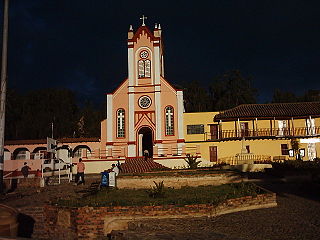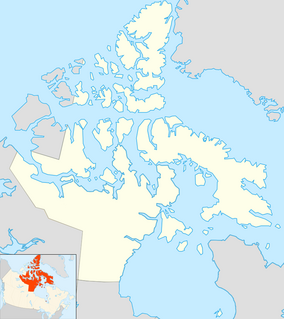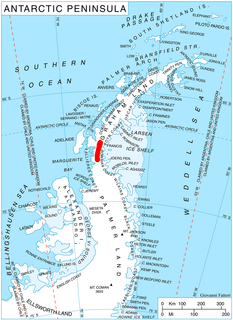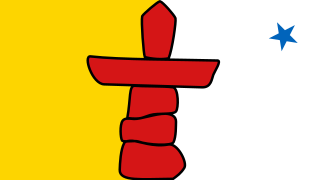
El Espino is a town and municipality in the Colombian Department of Boyacá, part of the subregion of the Gutiérrez Province.

Cuítiva is a town and municipality in the Sugamuxi Province, part of the Colombian department of Boyacá. The urban centre is situated on the Altiplano Cundiboyacense at an altitude of 2,750 metres (9,020 ft) and a distance of 85 kilometres (53 mi) from the department capital Tunja. The altitudes of the municipality range from 2,727 metres (8,947 ft) to 3,200 metres (10,500 ft) and it borders Iza in the north, Sogamoso in the east, Aquitania in the west and Tota in the south.
Ueda Glacier is a large glacier flowing eastward along the south side of the Scaife Mountains to enter Hansen Inlet near the base of Antarctic Peninsula. It was mapped by United States Geological Survey (USGS) from surveys and U.S. Navy air photos from 1961-67 and named by Advisory Committee on Antarctic Names (US-ACAN) for Herbert T. Ueda who, with B. Lyle Hansen, was in charge of the deep core drilling program at Byrd Station, summers 1966-67 and 1967-68.

Hanchey Army Heliport is a military heliport serving Fort Rucker in Dale County, Alabama, United States. Owned by the United States Army, it is located 6 NM (11 km) south of the city of Ozark.
Ward Inlet is a body of water in Nunavut's Qikiqtaaluk Region. It lies in eastern Frobisher Bay, forming a wedge into Baffin Island, separating Becher Peninsula from Hall Peninsula. Augustus Island lies deep into the inlet.

Admiralty Inlet is a body of water in Nunavut's Qikiqtaaluk Region. It extends southerly from Lancaster Sound along the western shore of Baffin Island's Borden Peninsula. The hamlet of Arctic Bay is located on Uluksan Peninsula, a landform that juts into Admiralty Inlet south of Sirmilik National Park.
Berlinguet Inlet is a body of water within the Qikiqtaaluk Region of Nunavut, Canada. It runs west-east at Admiralty Inlet's southern end, separated from Berlinguet Bay, which opens into the Gulf of Boothia, by a 1.5 km (0.93 mi) isthmus. Baffin Island's Brodeur Peninsula is to the north.
Baumann Fiord is a natural inlet in the south-west of Ellesmere Island, Nunavut in the Canadian Arctic Archipelago. To the west, it opens into Norwegian Bay. Hoved Island lies in the fiord.
Cañon Fiord is a natural inlet in the west of Ellesmere Island, Nunavut in the Canadian Arctic Archipelago. To the north, it opens into Greely Fiord.
Powell Inlet is a body of water in the Qikiqtaaluk Region of Nunavut, Canada. It lies off the southern coast of Devon Island in the eastern high Arctic. Like Stratton Inlet, Burnett Inlet, Hobhouse Inlet, and Cuming Inlet, Powell Inlet is situated between Maxwell Bay and Croker Bay, north of Lancaster Sound and Barrow Strait.
Cuming Inlet is a body of water in the Qikiqtaaluk Region of Nunavut, Canada. It lies off the southern coast of Devon Island in the eastern high Arctic. Like Stratton Inlet, Burnett Inlet, Hobhouse Inlet, and Powell Inlet, Cuming Inlet is situated between Maxwell Bay and Croker Bay, north of Lancaster Sound and Barrow Strait.
Singarnaq-Annertussoq Island is an island of Greenland. It is located in Baffin Bay in the Upernavik Archipelago.
Defant Glacier is a glacier 2 nautical miles (4 km) wide at its mouth, which flows east-southeast to the west side of Violante Inlet, on the east coast of Palmer Land. It was discovered and photographed from the air in December 1940 by the United States Antarctic Service; during 1947 the glacier was photographed from the air by members of the Ronne Antarctic Research Expedition, who in conjunction with the Falkland Islands Dependencies Survey (FIDS) charted it from the ground. It was named by the FIDS for Albert Defant, an Austrian meteorologist and oceanographer who was Professor of Oceanography at the "Friedrich-Wilhelms-Universität" and also Director of the "Institut and Museum für Meereskunde" in Berlin, Germany, from 1926 to 1945.

Demorest Glacier is a glacier on the northeast side of Hemimont Plateau which flows southeast into Whirlwind Inlet between Flint Glacier and Matthes Glacier, on the east coast of Graham Land. It was discovered by Sir Hubert Wilkins on a flight of December 20, 1928, and photographed from the air by the United States Antarctic Service in 1940. It was charted by the Falkland Islands Dependencies Survey in 1947 and named for Max H. Demorest, an American glaciologist.
Violante Inlet is an ice-filled inlet 30 kilometres (16 nmi) long, in an east-west direction, and 22 to 28 kilometres wide, lying between Cape Fanning and Cape Herdman along the east coast of Palmer Land. Discovered and photographed from the air in December 1940 by members of the United States Antarctic Service (USAS) and named for Maj. Andre L. Violante, USA, who designed the prefabricated buildings used by the expedition. Particularly because of a false floor, they proved to be the must satisfactory quarters used by American Antarctic expeditions.
Pullen Island is a snow-covered island 5 nautical miles (9 km) long, which rises to 495 m at its north end, lying near the center of Violante Inlet along the east coast of Palmer Land. Discovered by the United States Antarctic Service (USAS) in a flight from East Base on December 30, 1940, and named for William A. Pullen, Aviation Machinist's Mate at the East Base.
Mobiloil Inlet is an ice-filled inlet, nurtured by several northeast and east flowing glaciers, lying between the Rock Pile Peaks and Hollick-Kenyon Peninsula along the east coast of the Antarctic Peninsula. It was discovered by Sir Hubert Wilkins in a flight on December 20, 1928, and named by him after a product of the Vacuum Oil Company of Australia. Yates Spur, a prominent rock spur, projects from the south side of the inlet.
Tofani Glacier is a glacier flowing northeast into the head of Solberg Inlet, Bowman Coast, to the north of Houser Peak. The feature was photographed from the air by United States Antarctic Service (USAS), 1940, U.S. Navy, 1966, and was surveyed by Falkland Islands Dependencies Survey (FIDS), 1946-48. Named by Advisory Committee on Antarctic Names (US-ACAN) in 1977 after Dr. Walter Tofani, M.D., station physician at Palmer Station, 1975.

Renaud Glacier is a heavily crevassed glacier on the east side of Hemimont Plateau flowing southeast to enter Seligman Inlet between Lewis Glacier and Choyce Point, on the east coast of Graham Land. The glacier was first photographed by the United States Antarctic Service (USAS), 1939-41. Named by United Kingdom Antarctic Place-Names Committee (UK-APC) for Andre Renaud, Swiss glaciologist and chairman of the Swiss Glacier Commission, 1955-74.
Robillard Glacier is a narrow glacier flowing east-northeast and entering the north side of the head of Solberg Inlet, on the east coast of Graham Land. It was discovered by members of East Base of the United States Antarctic Service (USAS), 1939–41, and was photographed from the air in 1947 by the Ronne Antarctic Research Expedition (RARE), under Ronne, and charted in 1948 by the Falkland Islands Dependencies Survey (FIDS). It was named by Ronne for Captain George Robillard, U.S. Navy, of the legal section of the Bureau of Ships, who assisted in gaining Congressional support which resulted in procuring the expedition ship.







